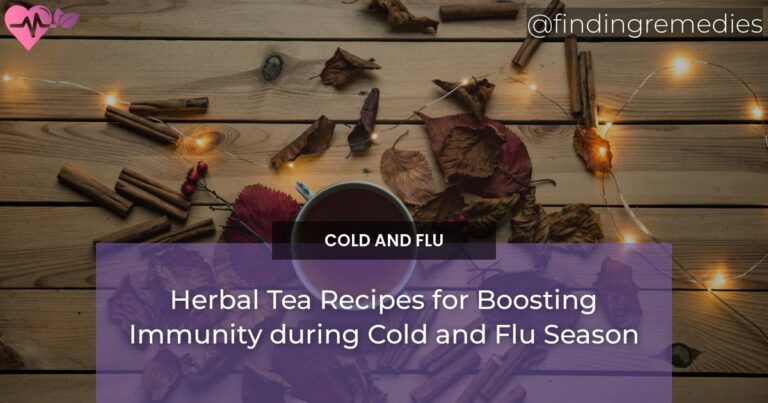Echinacea, also known as the purple coneflower, is a popular herb that has been used for centuries as a natural remedy for various ailments. Its use can be traced back to Native American tribes who used it for everything from boosting immunity to treating wounds. Today, echinacea is widely recognized as one of the most effective natural remedies for cold and flu, making it an essential herb to have in your medicine cabinet. In this article, we will explore the many benefits of echinacea, how it works, recommended usage and dosage instructions, precautions to keep in mind, and how it compares to traditional medicine. So, let’s dive in and discover why echinacea is the ultimate natural remedy for cold and flu.
Introduction
What is Echinacea?
Echinacea is a flowering plant that belongs to the daisy family. It is native to North America and has been used for centuries in traditional medicine to treat various ailments. There are nine species of echinacea, but the most commonly used for its medicinal properties are Echinacea purpurea, Echinacea angustifolia, and Echinacea pallida.
How does Echinacea work?
Echinacea is believed to work by stimulating the immune system, specifically the production of white blood cells, which are responsible for fighting off infections. It also contains compounds that have anti-inflammatory and antioxidant effects, making it effective in reducing inflammation and promoting healing.
ALSO READ
Benefits of Echinacea
Boosts the Immune System
Echinacea is most well-known for its ability to boost the immune system. It stimulates the production of white blood cells, which are crucial in fighting off infections, making it an excellent natural remedy for preventing and treating colds and flu.
Reduces Symptoms of Cold and Flu
Echinacea has been shown to reduce the severity and duration of cold and flu symptoms. It can help alleviate symptoms such as sore throat, cough, and congestion, making it a go-to herb for cold and flu season.
Decreases Inflammation
The anti-inflammatory properties of echinacea make it effective in reducing inflammation in the body. It can help alleviate symptoms of conditions such as arthritis and respiratory infections.
Supports Respiratory Health
Echinacea has been traditionally used to treat respiratory infections, such as bronchitis and sinusitis. Its immune-boosting and anti-inflammatory properties make it effective in supporting respiratory health and reducing symptoms of respiratory infections.
Promotes Wound Healing
Echinacea has been used topically to promote wound healing and reduce inflammation. Studies have shown that it can help speed up the healing process and reduce the risk of infection.
Usage and Dosage Instructions
Forms of Echinacea
Echinacea is available in various forms, including capsules, tinctures, and teas. Each form has its benefits, and it is essential to choose the form that works best for you.
Recommended Dosage
The recommended dosage of echinacea varies depending on the form and the condition being treated. It is always best to consult with a healthcare provider before starting any new supplement or herb. Generally, the recommended dosage for adults is 300-500 mg of echinacea extract, three times a day.
How to Take Echinacea
Echinacea can be taken as a daily supplement to boost immunity or at the onset of cold and flu symptoms. It is best to take it on an empty stomach, and it is not recommended to take it for more than 10 days in a row.
ALSO READ
Precautions
Side Effects
Echinacea is generally considered safe for most people, but some individuals may experience mild side effects, including nausea, stomach discomfort, and dizziness. If you experience any adverse effects, it is best to stop taking echinacea and consult with a healthcare provider.
Interactions with Medications
Echinacea may interact with certain medications, including immunosuppressants, birth control pills, and some medications for HIV/AIDS. It is essential to consult with a healthcare provider before taking echinacea if you are on any medications.
Allergic Reactions
Some people may have an allergic reaction to echinacea, especially if they are allergic to plants in the daisy family. If you experience any allergic symptoms, such as rash, itching, or difficulty breathing, stop taking echinacea and seek medical attention immediately.
Comparison to Traditional Medicine
Antibiotics vs. Echinacea
Antibiotics are commonly prescribed for bacterial infections, but they can also kill beneficial bacteria in the gut. Echinacea, on the other hand, is a natural remedy that can help boost the immune system without harming the good bacteria in the body.
Natural vs. Synthetic Remedies
Echinacea is a natural remedy that has been used for centuries, while traditional medicine often relies on synthetic drugs. Many people prefer natural remedies because they tend to have fewer side effects and are gentler on the body.
Effectiveness and Safety
Echinacea has been extensively studied and has been found to be both effective and safe for most people. However, traditional medicine often has more research backing its effectiveness, but it also comes with more potential side effects.
Conclusion
Echinacea is a powerful herb that has been used for centuries as a natural remedy for various ailments. It is most well-known for its ability to boost immunity and reduce symptoms of cold and flu. Its anti-inflammatory and antioxidant properties also make it effective in supporting respiratory health and promoting wound healing. When used correctly and in consultation with a healthcare provider, echinacea can be a safe and effective alternative to traditional medicine. So the next time you feel a cold coming on, reach for echinacea, the ultimate natural remedy for cold and flu.
RELATED ARTICLES:

